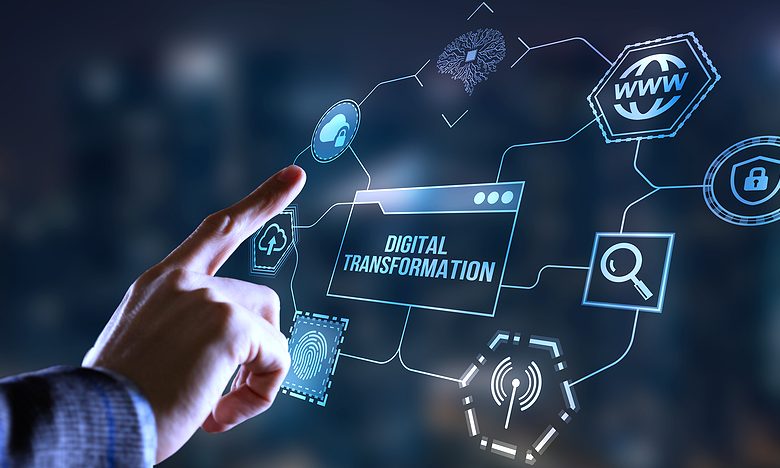
Introduction:
In the labyrinth of modern life, where information bombardment and multitasking have become the norm, cognitive support and memory aids play a crucial role in helping individuals navigate the complexities of daily existence. From simple mnemonic techniques to sophisticated digital tools, these aids serve as allies in bolstering cognitive abilities, improving productivity, and enhancing overall well-being. In this exploration, we delve into the diverse array of cognitive support mechanisms and memory aids available, highlighting their importance and potential in empowering minds in the digital age.
Mnemonics and Memory Techniques:
Dating back to ancient times, mnemonic devices have been employed as effective memory aids, harnessing the power of association, visualization, and repetition to enhance retention and recall. Techniques such as the Method of Loci, which involves mentally associating information with specific locations, and acronyms, which condense complex concepts into memorable abbreviations, have stood the test of time, offering practical strategies for improving memory performance.
Unlocking the Power of Mnemonics and Memory Techniques: A Comprehensive Guide
In the vast landscape of human cognition, memory reigns supreme as a cornerstone of intellectual prowess and daily functionality. From recalling important information in academic settings to remembering crucial tasks in everyday life, memory plays a pivotal role in shaping our experiences and facilitating learning and productivity. Amidst the myriad strategies aimed at enhancing memory performance, mnemonics and memory techniques stand out as time-tested tools that harness the innate capabilities of the human mind to encode, store, and retrieve information more effectively. In this comprehensive guide, we explore the principles, methods, and applications of mnemonics and memory techniques, offering insights into their efficacy and practical utility in various contexts.
Understanding Mnemonics:
At its core, mnemonics is an ancient mnemonic technique that leverages associations, imagery, and patterns to aid memory retention and recall. The term “mnemonic” derives from the Greek word “mnēmonikos,” meaning “pertaining to memory,” reflecting its fundamental purpose of enhancing memory performance. Mnemonics capitalize on the brain’s natural inclination towards pattern recognition and visualization, tapping into cognitive processes such as spatial memory, semantic encoding, and episodic memory to facilitate learning and retention.
Practical Applications:
Mnemonics and memory techniques find application across a wide range of domains, from education and academia to professional settings and daily life. In educational contexts, mnemonics can aid students in memorizing facts, formulas, vocabulary, and historical dates, facilitating learning and retention of complex material. Similarly, professionals in fields such as medicine, law, and finance can benefit from mnemonic techniques to recall critical information, procedures, and case details.
Moreover, mnemonics can be used to enhance everyday memory tasks, such as remembering shopping lists, appointment dates, phone numbers, and passwords. By incorporating mnemonic strategies into daily routines, individuals can streamline cognitive processes, reduce cognitive load, and enhance overall memory performance, leading to greater efficiency and productivity in various aspects of life.
Enhancing Memory with Technology:
In the digital age, technology has expanded the horizons of memory enhancement, offering innovative tools and platforms that complement traditional mnemonic techniques. Mobile apps, online platforms, and computer software provide interactive exercises, games, and quizzes designed to stimulate cognitive processes and improve memory skills. Spaced repetition algorithms, which schedule review sessions based on the spacing effect, optimize long-term retention of information, while virtual reality (VR) environments offer immersive experiences that engage multiple sensory modalities to enhance memory encoding and retrieval.
Furthermore, wearable devices equipped with sensors and biometric feedback capabilities can track cognitive performance metrics and provide personalized insights into memory function and cognitive health. By leveraging the power of technology, individuals can augment traditional mnemonic techniques with digital tools and resources to maximize memory potential and optimize brain health in the digital age.
Conclusion:
In conclusion, mnemonics and memory techniques represent invaluable tools for enhancing memory performance and optimizing cognitive function across various domains. By tapping into the brain’s natural capacity for pattern recognition, visualization, and association, mnemonic strategies empower individuals to encode, store, and retrieve information more effectively, facilitating learning, productivity, and overall well-being. Whether applied in educational, professional, or everyday contexts, mnemonics offer a versatile and accessible approach to memory enhancement that transcends the boundaries of age, occupation, and expertise. As we continue to unlock the mysteries of human cognition, mnemonics stand as a timeless testament to the remarkable capabilities of the human mind.
Furthermore, the use of imagery, storytelling, and rhymes can engage multiple senses and create vivid mental representations that facilitate learning and memory consolidation. Whether memorizing lists, dates, or formulas, leveraging mnemonic techniques can provide a cognitive scaffold that supports efficient encoding and retrieval processes, empowering individuals to overcome memory challenges and optimize cognitive performance.
Digital Tools and Apps:
In an era defined by technological innovation, a plethora of digital tools and applications have emerged to support cognitive functioning and memory enhancement. From note-taking apps and task managers to brain-training programs and virtual assistants, these tools leverage the power of digital technology to augment cognitive abilities and streamline daily tasks.
For example, spaced repetition software utilizes algorithms to schedule review sessions at optimal intervals, maximizing long-term retention of information. Similarly, brain-training apps offer a variety of cognitive exercises designed to improve memory, attention, and problem-solving skills through gamified experiences and personalized feedback. Additionally, virtual assistants like Siri, Alexa, and Google Assistant provide voice-activated interfaces that can assist with reminders, scheduling, and information retrieval, freeing up mental resources and promoting efficiency.
Exploring the World of Digital Tools and Apps: Empowering Productivity and Connectivity in the Digital Age
In the dynamic landscape of the digital age, the proliferation of digital tools and apps has revolutionized the way we work, communicate, learn, and navigate daily life. From productivity apps and collaboration platforms to entertainment services and lifestyle trackers, these digital innovations have become indispensable companions, empowering individuals and organizations to streamline workflows, connect with others, and optimize various aspects of their lives. In this comprehensive exploration, we delve into the diverse array of digital tools and apps available, examining their functionalities, benefits, and impact on modern society.
Productivity Tools:
In an era defined by information overload and multitasking, productivity tools play a vital role in helping individuals manage tasks, organize information, and maximize efficiency. From task management apps like Todoist and Trello to note-taking platforms such as Evernote and Microsoft OneNote, these tools offer intuitive interfaces and robust features that facilitate goal setting, time management, and project collaboration.
Additionally, calendar apps like Google Calendar and Microsoft Outlook enable users to schedule appointments, set reminders, and coordinate meetings seamlessly across multiple devices. Furthermore, productivity suites like Microsoft Office 365 and Google Workspace provide integrated solutions for document creation, collaboration, and communication, empowering teams to collaborate in real-time and work more effectively regardless of their location.
Communication Platforms:
Communication platforms have transformed the way we connect and collaborate with others, breaking down geographical barriers and fostering global connectivity. Instant messaging apps like WhatsApp, Slack, and Microsoft Teams enable real-time communication and collaboration among individuals and teams, facilitating quick exchanges of messages, files, and multimedia content.
Moreover, video conferencing tools like Zoom and Skype have become indispensable for remote work, virtual meetings, and online learning, offering high-quality audio and video capabilities that replicate face-to-face interactions. Additionally, social media platforms such as Facebook, Twitter, and Instagram provide channels for networking, sharing ideas, and building communities around shared interests, bridging distances and fostering meaningful connections in the digital realm.
Entertainment and Media Services:
Digital tools and apps have revolutionized the entertainment industry, offering an unprecedented array of content and services tailored to diverse preferences and interests. Streaming platforms like Netflix, Hulu, and Disney+ provide on-demand access to movies, TV shows, and original content, enabling users to enjoy entertainment anytime, anywhere, on any device.
Similarly, music streaming services such as Spotify, Apple Music, and Amazon Music offer vast libraries of songs, playlists, and podcasts, catering to a wide range of musical tastes and genres. Additionally, gaming platforms like Steam, PlayStation Network, and Xbox Live provide immersive gaming experiences and social features that connect gamers around the world, fostering communities and friendships in virtual worlds.
Health and Wellness Apps:
The rise of health and wellness apps has empowered individuals to take control of their physical and mental well-being, offering tools and resources for fitness tracking, mindfulness, and self-care. Fitness apps like Strava, MyFitnessPal, and Nike Training Club provide personalized workout plans, activity tracking, and nutrition guidance, helping users achieve their health and fitness goals.
Similarly, mindfulness and meditation apps such as Headspace, Calm, and Insight Timer offer guided meditation sessions, relaxation techniques, and sleep aids to reduce stress, improve focus, and enhance overall mental wellness. Furthermore, habit-tracking apps like Habitica and Loop enable users to cultivate positive habits and break unhealthy routines through gamification and accountability features.
Conclusion:
Digital tools and apps have become indispensable companions in the digital age, empowering individuals and organizations to enhance productivity, connectivity, and well-being in various aspects of life. Whether used for managing tasks, communicating with others, consuming entertainment, or promoting health and wellness, these digital innovations offer unprecedented opportunities for convenience, efficiency, and personalization. As technology continues to evolve and shape the way we live, work, and interact, the world of digital tools and apps will undoubtedly remain a vibrant and essential aspect of modern society, enriching lives and expanding possibilities in the digital realm.
Wearable Devices and Biometric Feedback:
Advancements in wearable technology have paved the way for innovative approaches to cognitive support and memory enhancement. Wearable devices equipped with sensors and biometric monitoring capabilities can provide real-time feedback on physiological indicators such as heart rate variability, stress levels, and sleep patterns, offering insights into cognitive functioning and overall well-being.
By tracking cognitive performance metrics and correlating them with lifestyle factors, individuals can gain valuable insights into their cognitive strengths and weaknesses, enabling targeted interventions and lifestyle modifications to optimize brain health. Moreover, wearable devices can serve as proactive reminders for medication adherence, hydration, and physical activity, fostering habits that support cognitive function and memory retention over time.
Wearable Devices and Biometric Feedback: Revolutionizing Personal Health and Performance
In the fast-paced world of modern technology, wearable devices and biometric feedback have emerged as powerful tools for monitoring, managing, and optimizing personal health and performance. From fitness trackers and smartwatches to biometric sensors and wearable medical devices, these innovations offer individuals unprecedented insights into their physiological parameters, activity levels, and overall well-being. In this comprehensive exploration, we delve into the realm of wearable devices and biometric feedback, examining their evolution, functionalities, and potential impact on human health and performance.
Evolution of Wearable Technology:
The roots of wearable technology can be traced back to the early 20th century with the invention of the wristwatch, which served as a portable timekeeping device worn on the wrist. Over the decades, technological advancements in miniaturization, sensor technology, and wireless connectivity have fueled the development of wearable devices capable of capturing a wide range of biometric data in real-time.
In the 21st century, the rise of smartphones and mobile computing has accelerated the adoption of wearable technology, paving the way for devices like fitness trackers, smartwatches, and health monitors. These wearables leverage sensors such as accelerometers, gyroscopes, heart rate monitors, and GPS receivers to track various aspects of physical activity, sleep patterns, heart rate variability, and more, providing users with actionable insights into their health and fitness levels.
Future Directions and Challenges:
As wearable technology continues to evolve, future innovations are expected to focus on improving sensor accuracy, enhancing data analysis algorithms, and expanding the range of biometric parameters that can be monitored. Additionally, advancements in materials science, battery technology, and user interface design may lead to the development of more comfortable, durable, and user-friendly wearables that seamlessly integrate into everyday life.
However, the widespread adoption of wearable devices also raises important considerations regarding data privacy, security, and ethical implications. As wearables collect increasingly sensitive health data, it is essential to ensure robust safeguards are in place to protect user privacy, prevent data breaches, and maintain trust in wearable technology.
Conclusion:
In conclusion, wearable devices and biometric feedback represent a paradigm shift in personal health and performance monitoring, offering individuals unprecedented access to real-time insights into their physiological parameters and activity levels. From activity tracking and heart rate monitoring to sleep analysis and stress management, these wearable technologies have the potential to empower individuals to take control of their health, optimize their performance, and enhance their overall well-being. As wearable technology continues to evolve and permeate various aspects of daily life, it is crucial to harness its potential responsibly, while addressing challenges related to privacy, security, and ethical considerations, to ensure a future where wearable devices truly empower individuals to live healthier, happier, and more fulfilling lives.
Assistive Technologies for Neurodiversity:
For individuals with neurodiverse conditions such as dyslexia, ADHD, or autism spectrum disorder, specialized assistive technologies can provide invaluable support in overcoming cognitive challenges and maximizing potential. Text-to-speech software, speech recognition tools, and screen readers can facilitate access to written information for individuals with reading difficulties or visual impairments, while adaptive learning platforms and interactive educational software can accommodate diverse learning styles and preferences.
Empowering Neurodiversity: Exploring Assistive Technologies
In the mosaic of human cognition, diversity reigns supreme, encompassing a spectrum of neurodiverse conditions such as autism, ADHD, dyslexia, and dyspraxia. While these conditions present unique challenges, they also offer distinct perspectives, talents, and strengths that enrich the fabric of society. In recent years, the advent of assistive technologies has emerged as a powerful force for leveling the playing field, empowering individuals with neurodiverse profiles to unlock their full potential, bridge communication gaps, and thrive in various domains of life. In this comprehensive exploration, we delve into the realm of assistive technologies for neurodiversity, examining their applications, benefits, and transformative impact on individuals and communities.
Understanding Neurodiversity:
Neurodiversity embraces the concept that neurological differences are natural variations of the human brain, rather than deficits or disorders to be fixed or cured. It recognizes that individuals with neurodiverse conditions possess unique cognitive profiles, talents, and perspectives that contribute to the richness of human experience. From heightened sensory sensitivities and pattern recognition abilities to divergent thinking styles and exceptional attention to detail, neurodiverse individuals offer invaluable insights and contributions across various fields, including science, technology, arts, and humanities.
The Role of Assistive Technologies:
Assistive technologies play a pivotal role in supporting neurodiverse individuals in overcoming challenges related to communication, learning, organization, and social interaction. These technologies encompass a wide range of tools, devices, and software applications designed to accommodate diverse cognitive needs and preferences, foster independence, and facilitate inclusion in educational, professional, and social contexts.
Challenges and Considerations:
Despite their myriad benefits, assistive technologies for neurodiversity also pose challenges and considerations related to accessibility, affordability, usability, and ethical implications. Ensuring equitable access to assistive technologies for all individuals, regardless of socioeconomic status or geographic location, remains a critical concern. Additionally, ongoing research and development efforts are needed to address gaps in technology design, usability, and effectiveness, as well as to promote user-centered approaches that prioritize the needs and preferences of neurodiverse individuals.
Conclusion:
In conclusion, assistive technologies for neurodiversity represent a beacon of hope and empowerment for individuals with diverse cognitive profiles, offering tailored solutions to overcome challenges, unlock potential, and thrive in a world designed for neurotypical norms. As technology continues to evolve and innovate, the future holds immense promise for further advancements in assistive technologies that promote inclusion, accessibility, and equity for all individuals, regardless of their neurodiversity. By embracing neurodiversity and harnessing the transformative power of assistive technologies, we can create a more inclusive, understanding, and supportive society where every individual is valued, respected, and empowered to achieve their full potential.
Additionally, wearable devices and sensory aids designed specifically for neurodiverse individuals can offer personalized support in managing sensory sensitivities, regulating attention, and promoting self-regulation. By harnessing the power of technology to create inclusive environments and empower individuals with diverse cognitive profiles, assistive technologies play a vital role in fostering equity, accessibility, and autonomy for all.
Technological Advancements:
The 21st century has witnessed an explosion of technological innovations in transportation, reshaping how people and goods move across the globe. The emergence of electric vehicles (EVs), powered by clean energy sources, represents a paradigm shift away from traditional internal combustion engines, promising reduced emissions and a sustainable future. Additionally, the integration of smart technologies, such as GPS navigation, real-time traffic monitoring, and ride-sharing platforms, has optimized transportation efficiency, alleviated congestion, and enhanced user experience.
Moreover, the advent of autonomous vehicles (AVs) heralds a new era of mobility, where machines assume the role of drivers, potentially revolutionizing urban transportation systems, improving safety, and transforming the concept of car ownership. Meanwhile, the burgeoning field of hyperloop technology promises ultra-fast, energy-efficient modes of intercity travel, challenging the dominance of conventional rail and air transport.
Environmental Imperatives:
As concerns over climate change escalate, transportation has come under scrutiny for its significant contribution to greenhouse gas emissions and air pollution. In response, governments, industries, and consumers are increasingly prioritizing sustainable mobility solutions. The transition to electric and hybrid vehicles, coupled with the expansion of public transportation networks and cycling infrastructure, aims to mitigate environmental impacts while fostering cleaner, greener cities.
Furthermore, initiatives such as car-sharing schemes, congestion pricing, and urban planning strategies that promote mixed land-use development and walkability seek to reduce reliance on private automobiles, curbing emissions and fostering a more sustainable urban mobility ecosystem. Additionally, the electrification of public transit fleets and the integration of renewable energy sources into transportation infrastructure contribute to the decarbonization of the sector, aligning with global efforts to combat climate change.
Urbanization Trends:
Rapid urbanization poses both challenges and opportunities for transportation systems worldwide. As more people flock to cities in search of economic opportunities and improved quality of life, urban centers grapple with congestion, pollution, and inadequate infrastructure. To address these issues, cities are embracing innovative approaches to mobility, including bus rapid transit (BRT) systems, pedestrian-friendly urban design, and the promotion of micro mobility options such as electric scooters and bike-sharing programs.
Furthermore, the concept of “mobility as a service” (MaaS) is gaining traction, offering integrated, multi-modal transportation solutions tailored to individual needs. By leveraging digital platforms and data analytics, MaaS initiatives aim to streamline urban travel, reduce car dependency, and enhance overall mobility, accessibility and affordability. Additionally, urban planners are exploring concepts like transit-oriented development (TOD) and mobility hubs to create more sustainable, livable urban environments where transportation seamlessly integrates with land use and community needs.
Conclusion:
In conclusion, cognitive support and memory aids encompass a wide range of techniques, tools, and technologies aimed at enhancing cognitive abilities, improving memory performance, and optimizing overall brain health. Whether through ancient mnemonic techniques, digital tools and apps, wearable devices, or specialized assistive technologies for neurodiversity, these aids offer valuable resources for individuals seeking to navigate the complexities of modern life with confidence and clarity. By leveraging the power of innovation and harnessing the potential of technology, we can empower minds and unlock the full potential of human cognition in the digital age.




